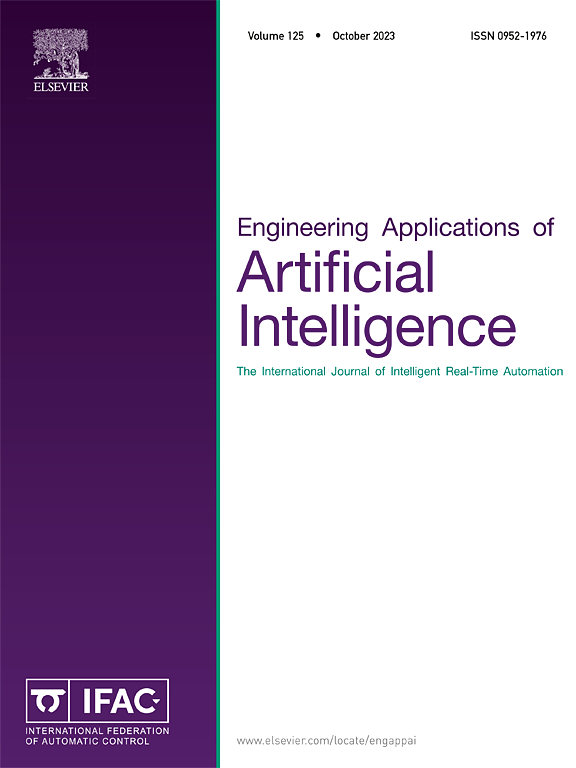Enhanced lightweight detection of small and tiny objects in high-resolution images using object tracking-based region of interest proposal
IF 7.5
2区 计算机科学
Q1 AUTOMATION & CONTROL SYSTEMS
Engineering Applications of Artificial Intelligence
Pub Date : 2025-04-26
DOI:10.1016/j.engappai.2025.110852
引用次数: 0
Abstract
Detecting small objects in high-resolution images is challenging in practical applications. Downsampling the image makes small objects difficult or impossible to detect, while processing multiple low-resolution detection windows using a sliding-window approach is both time-consuming and impractical. To deal with this engineering problem, we present a novel window-based object detection system designed for detecting tiny and multi-scale objects in high-resolution images. Our approach introduces two Region of Interest (ROI) Modules that select full-resolution areas for the detector to focus on. We use a low-resolution current frame to estimate ROIs with a segmentation-based branch combined with past detection metadata to predict object locations with a tracking-based branch. By fusing outputs from these modules, we effectively recover regions with tiny objects overlooked by the estimation branch, and we significantly reduce the number of object detection runs compared to the sliding-window approach, maintaining the method’s speed. Moreover, we employ a fusion of downscaling and sliding-window techniques within large ROIs, complemented by our novel Overlapping Box Suppression (OBS) algorithm to reduce partial false-positive detections. We analyze our system and all its components on two challenging datasets — SeaDronesSee and DroneCrowd to show superior performance compared to state-of-the-art object detectors. Our approach enhances both the Artificial Intelligence (AI) and engineering domains by improving the quality and efficiency of tiny object detection, facilitating its integration into demanding real-time robotics applications. The inference code is available at https://github.com/deepdrivepl/TinyROIFusion.
基于目标跟踪的兴趣区域增强了高分辨率图像中微小目标的轻量级检测
在实际应用中,检测高分辨率图像中的小物体具有挑战性。对图像进行下采样使得小物体难以或不可能被检测到,而使用滑动窗口方法处理多个低分辨率检测窗口既耗时又不切实际。为了解决这一工程问题,我们提出了一种新的基于窗口的目标检测系统,用于检测高分辨率图像中的微小和多尺度目标。我们的方法引入了两个感兴趣区域(ROI)模块,它们选择探测器聚焦的全分辨率区域。我们使用低分辨率的当前帧来估计roi,并结合基于分割的分支和过去的检测元数据来预测基于跟踪的分支的目标位置。通过融合这些模块的输出,我们有效地恢复了被估计分支忽略的具有微小目标的区域,并且与滑动窗口方法相比,我们显着减少了目标检测的运行次数,保持了方法的速度。此外,我们在大roi中采用了降尺度和滑动窗口技术的融合,辅以我们新颖的重叠盒抑制(OBS)算法来减少部分假阳性检测。我们在两个具有挑战性的数据集(SeaDronesSee和DroneCrowd)上分析了我们的系统及其所有组件,以显示与最先进的目标探测器相比的卓越性能。我们的方法通过提高微小物体检测的质量和效率,促进其集成到要求苛刻的实时机器人应用中,从而增强了人工智能(AI)和工程领域。推理代码可从https://github.com/deepdrivepl/TinyROIFusion获得。
本文章由计算机程序翻译,如有差异,请以英文原文为准。
求助全文
约1分钟内获得全文
求助全文
来源期刊

Engineering Applications of Artificial Intelligence
工程技术-工程:电子与电气
CiteScore
9.60
自引率
10.00%
发文量
505
审稿时长
68 days
期刊介绍:
Artificial Intelligence (AI) is pivotal in driving the fourth industrial revolution, witnessing remarkable advancements across various machine learning methodologies. AI techniques have become indispensable tools for practicing engineers, enabling them to tackle previously insurmountable challenges. Engineering Applications of Artificial Intelligence serves as a global platform for the swift dissemination of research elucidating the practical application of AI methods across all engineering disciplines. Submitted papers are expected to present novel aspects of AI utilized in real-world engineering applications, validated using publicly available datasets to ensure the replicability of research outcomes. Join us in exploring the transformative potential of AI in engineering.
 求助内容:
求助内容: 应助结果提醒方式:
应助结果提醒方式:


